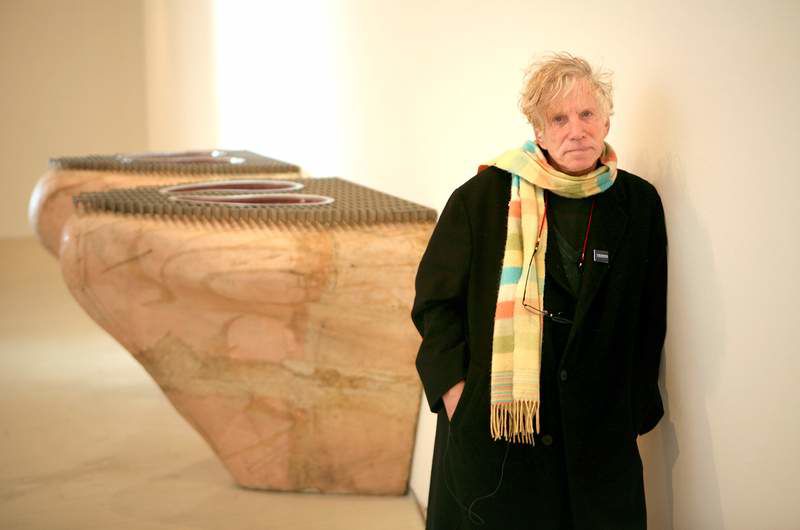Dennis Oppenheim, pioneer in earthworks, Conceptual art
Published 4:00 am Sunday, February 13, 2011

- Dennis Oppenheim with “Blood Breathe,” upturned nostrils, in New York in 2007. Oppenheim, a pioneer of earthworks, body art and Conceptual art, died Jan. 21 in Manhattan.
Dennis Oppenheim, a pioneer of earthworks, body art and Conceptual art who later made emphatically tangible installations and public sculptures that veered between the demonically chaotic and the cheerfully Pop, died Jan. 21 in Manhattan. He was 72.
The cause was liver cancer, his wife, Amy Van Winkle Plumb, said. Oppenheim, who died at Memorial Sloan-Kettering Cancer Center, had homes in Manhattan and the Springs section of East Hampton on Long Island.
Belonging to a generation of artists who saw portable painting and sculpture as obsolete, Oppenheim started out in the realm of the esoteric, the immaterial and the chronically unsalable. But he was always a showman, not averse to the circuslike, or to courting danger. For “Rocked Circle — Fear,” a 1971 body art piece, he stood at the center of a 5-foot-wide circle painted on a New York sidewalk while a friend dropped fist-size stones from three stories above, aiming for inside the circle without hitting the artist. There were no mishaps.
Oppenheim had a penchant for grandiosity. It was implicit in the close-up photograph of a splinter in his finger, portentously titled “Material Interchange.” It was explicit in “Charmed Journey Through a Step-Down Transformer,” a Rube Goldberg-like outdoor installation from 1980 that sprawled 125 feet down a slope at the Wave Hill garden and cultural center in the Bronx, its disparate parts suggesting engines, tracks, organ pipes and much else.
Sculptures like these, from Oppenheim’s Factories series, combined aspects of machines and industrial architecture with intimations of mysterious human processes, presenting what he called “a parallel to the mental processing of a raw idea” by both the artist and the viewer.
Many works involved moving parts, casts of animals (whole or partial), upturned or tilted building silhouettes and sound, water and fireworks, which on occasion prompted unscheduled visits by the fire department.
An athletic, ruggedly handsome man who maintained a shock of blond hair longer than seemed biologically possible, Oppenheim had a knack for the oddly poetic title — as in “A Station for Detaining and Blinding Radio-Active Horses” — and a penchant for the occasional sensational remark. “Korea is a nice place to be,” he said after executing sculptural commissions for the 1988 summer Olympics in Seoul, “if your work is hysterical.”
Dennis Allan Oppenheim was born in Electric City, Wash., on Sept. 6, 1938. His father was an engineer; his mother promoted his early interest in art. In the mid-1960s, he earned a Bachelor of Fine Arts from the California College of Arts and Crafts in Oakland and an MFA from Stanford. He moved to New York in 1966.
He first became known for works in which, like an environmentally inclined Marcel Duchamp, using engineers’ stakes and photographs, he simply designated parts of the urban landscape as artworks. Then, in step with artists like Robert Smithson, Walter De Maria and Lawrence Weiner, he began making temporary outdoor sculptures, soon to be known as land art or earthworks. “Landslide,” from 1968, for example, was an immense bank of loose dirt near Exit 52 of the Long Island Expressway in central Long Island that he punctuated with rows of steplike right angles made of painted wood.






